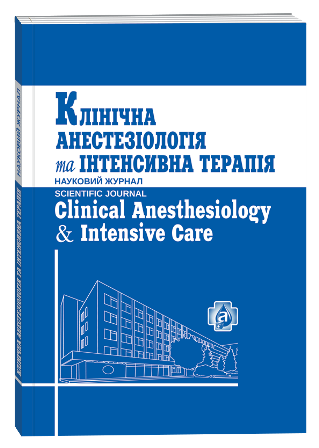EVALUATION OF THE INITIAL STATE OF THE HEMOSTASIS SYSTEM IN PATIENTS WITH OBLITERATING ATHEROSCLEROSIS OF THE VESSELS OF THE LOWER EXTREMITIES
DOI:
https://doi.org/10.31379/2411.2616.11.1.10Keywords:
obliterating atherosclerosis, thrombus formation, hemostasisAbstract
Relevance. The problem of treatment of obliterative atherosclerosis (OA) of the vessels of the lower extremities is currently very relevant. The reasons are, on the one hand, progressive type of disease, leading to severe ischemia and trophic changes in 5–15 years, and, on the other hand, ambiguous results of traditional methods of operative and conservative treatment. Objective of the study. The purpose of this study is to evaluate the initial state of the hemostasis system in patients with obliterating atherosclerosis of the lower extremities, the study of the functional state of the vascular — platelet, coagulation and fibrinolysis of the hemostasis system and their disorders with low — frequency vibration piezoelectric thromboelastography. Materials and methods. The initial state of the hemostasis system was studied in 90 patients undergoing treatment for obliterating atherosclerosis of the lower limbs in the Odessa Regional Clinical Hospital. Results. The results of the studies represent a group of OA patients as a model in which are pronounced disorders of the aggregate state of the blood, where hypercoagulation dominates the anticoagulant potential. Inadequately enhanced activation of one or both coagulation units, even with the normal functioning of the anticoagulant system, can lead to generalized thrombus formation. Therefore, it is necessary to take into account the prevalence of thrombogenesis processes over fibrinolysis processes in this patient population and to consider the activation of platelet aggregation as an additional factor that participates in providing mechanisms for hypercoagulability.
References
Amy-Elizabeth Harwood. A Systematic Review of the Uptake and Adherence Rates to Supervised Exercise Programs in Patients with Intermittent Claudication. Annals of Vascular Surgery. July 2016. Vol. 34. P. 280–289.
Creager M. A., Libby P. Peripheral arterial disease. Braunwald’s Heart Disease: A Textbook of Cardiovascular Medicine. 10th ed. Philadelphia, PA: Elsevier Saunders, 2015. P. 58.
2011 ACCF AHA focused update of the Guideline for the Management of Patients With Peripheral Artery Disease (Updating the 2005 Guideline): A report of the American College of Cardiology Foundation / T. W. Rooke et al. American Heart Association Task Force on Practice Guidelines Circulation. 2011. Vol. 124. P. 2020–2045.
Can we use the low-frequency piezoelectric tromboelastography for diagnosis coagulation disorders? / O. Tarabrin et al. European Journal of Anaesthesiology. 2013. Vol. 30, Suppl. 51. P. 92.
Tyler R. Surgical Intervention for Peripheral Artery Disease Does Not Improve Patient Compliance with Recommended Medical Therapy. Annals of Vascular Surgery. January, 2018. Vol. 46. P. 104–111.







